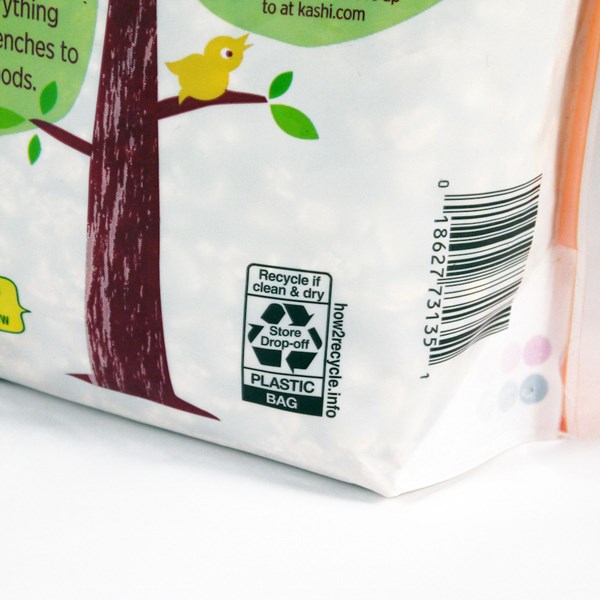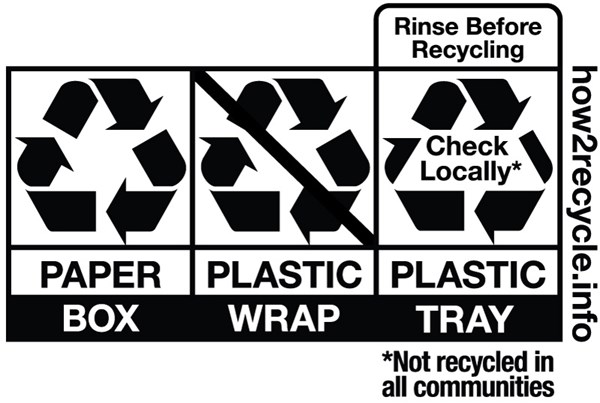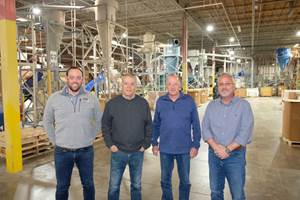How2Recycle Label Changing Recycling Habits
The How2Recycle Label program finished its soft launch in early 2012 and now has more than 60 participating companies and brands and is growing every month.
The How2Recycle Label program finished its soft launch in early 2012 and now has more than 60 participating companies and brands and is growing every month.
I finally live in a neighborhood that has a curbside recycling, which to be honest, is such a relief especially given the fact that I’m the recycling beat writer for PT. It felt kind of odd not to recycle at my house when I cover the industry on a consistent basis.
Yet I still found myself having to double check a couple items…Is this material too thin to be recycled?...What’s the rule again for in-mold labels?. Thankfully though I noticed much more packaging comes with the How2Recycle Label, which let’s face it—makes it as clear as can be about what can and can’t be recycled at the curb.
For a refresher, the How2Recycle label began in 2008, and is a project of the Sustainable Packaging Coalition. The How2Recycle Label program began in 2012 and now has 60-plus companies and brands participating.
How2Recycle was the first recycling labeling system in the U.S. designed for consumers. As you can see with the below example, it is very clear about the recycling instructions.
I recently checked in with Kelly Cramer, senior manager of the Sustainable Packaging Coalition, to get an update on the progress of the label and where is its future is heading.

Retailers and Brand Owners Sign Up
Cramer says that cumulatively, its members represent over 500 brands in the marketplace. Membership in How2Recycle provides a company the ability to use the How2Recycle label on any or all of their brands. So for members like General Mills, they can use the How2Recycle label on a wide array of their brands, like Betty Crocker, Green Giant, Cascadian Farm, Cheerios and Pillsbury. The company’s newest members include Gerber, Marcal, Amy’s Kitchen, Whirpool, Riley’s Organics, Nestle USA and PepsiCo.
Both major retailers Target and Walmart use the labels through their private label brands such as Walmart’s Equate and Target’s Market Pantry. In fact, Cramer says that those retailers have helped raise awareness and curiosity around recycling claims.
“What’s unique about private label packaging is that it spans across the entire retail experience,” Cramer says. “As consumers are shopping throughout the store, they will see the How2Recycle label on store brand food and beverage products, on personal care products, and beyond. The more prevalent the How2Recycle label becomes, the more consumers will grow to expect it, and notice when it may be missing from packaging.”
Walmart also featured the How2Recycle label in its Sustainable Packaging Playbook, which Cramer says has caught the attention of many brands that are eager to embrace a uniform recycling labeling system for packaging, as well as put the program in front of those who haven’t given it as much thought at all.
“Walmart encouraging others to join How2Recycle builds peer-to-peer confidence in the ease and importance of adopting the label,” she says. “For brands who haven’t previously prioritized transparent recycling labeling for packaging, it sends a powerful and persuasive message to get on board.”
And according to a survey from the company, consumers say that the label helps them recycle more, and more accurately. Fully 83% of the respondents said that the How2Recycle label teaches them something new about how to recycle packaging, and half say that they change their recycling behavior as a direct result of How2Recycle. Of the half that say they don’t change their behavior, the majority of the time it’s because they don’t have access to recycle that specific package or they already knew how to recycle the package.
Teaming with the Association of Plastic Recyclers
The How2Recycle program also works very closely with the Association of Plastic Recyclers (APR) when they determine technical recyclability.
“The unparalleled expertise of APR has been critical to building How2Recycle’s precision, so plastic recyclers can be confident that the How2Recycle label reflects an informed and objective recyclability analysis for each package,” Cramer says, “What this means is that the How2Recycle can help distinguish between lookalike packaging. That is packaging that looks exactly the same to the average person, but is actually different in terms of recyclability. In a perfect world, there would be more standardization and consistency across packaging types so that consumers can draw accurate and sweeping conclusions across similar-looking packaging. So the How2Recycle label is able to cut through that chaos, and call packages as they are.”
For example, plastic bottles that feature a metal spring inside a trigger sprayer have a Discard Sprayer instruction on the How2Recycle label. Since metal is detrimental to the plastic recycling stream, How2Recycle wants the consumer to leave it out. In contrast, bottles with all-plastic trigger sprayers have a Re-Attach Sprayer instruction of the How2Recycle label.
“Our member companies told us in a survey in 2016 that being empowered with that information allows them to improve their packaging design,” she says. “So when recyclers are supportive of How2Recycle, they aren’t just supporting an accurate recycling label; they’re also supporting a program that is influencing brands to make more recyclable packaging.
For these reasons, the How2Recycle label provides value to plastic recyclers by reducing contamination and increasing the volume of good material recovered. As the recycling and packaging industries continue to evolve, alignment along all entities in the system around initiatives like the How2Recycle label will help make the future of recycling resilient and prosperous.”

Related Content
Purecycle to Receive Expanded FDA Letter of No Objection for PureFive Resin
LNO expands the conditions of use for which the recycled polypropylene can be used.
Read MoreEvolving Opportunities for Ambitious Plastics Recycler
St. Joseph Plastics grew from a simple grinding operation and now pursues growing markets in recycled PP, food-grade recycled materials, and customized post-industrial and post-consumer compounds.
Read MoreShredding Thin Film: How to Do It Right
While many processors recoil at this task, a little know-how in shredding equipment, processing, and maintenance should add the necessary confidence.
Read MoreExtrusion Technology Extended to Injection, Enabling Up to 100% Regrind Usage
Twin-barrel (shot-pot) press can handle more regrind, offers other benefits to molders.
Read MoreRead Next
For PLASTICS' CEO Seaholm, NPE to Shine Light on Sustainability Successes
With advocacy, communication and sustainability as three main pillars, Seaholm leads a trade association to NPE that ‘is more active today than we have ever been.’
Read MoreBeyond Prototypes: 8 Ways the Plastics Industry Is Using 3D Printing
Plastics processors are finding applications for 3D printing around the plant and across the supply chain. Here are 8 examples to look for at NPE2024.
Read MoreLead the Conversation, Change the Conversation
Coverage of single-use plastics can be both misleading and demoralizing. Here are 10 tips for changing the perception of the plastics industry at your company and in your community.
Read More















